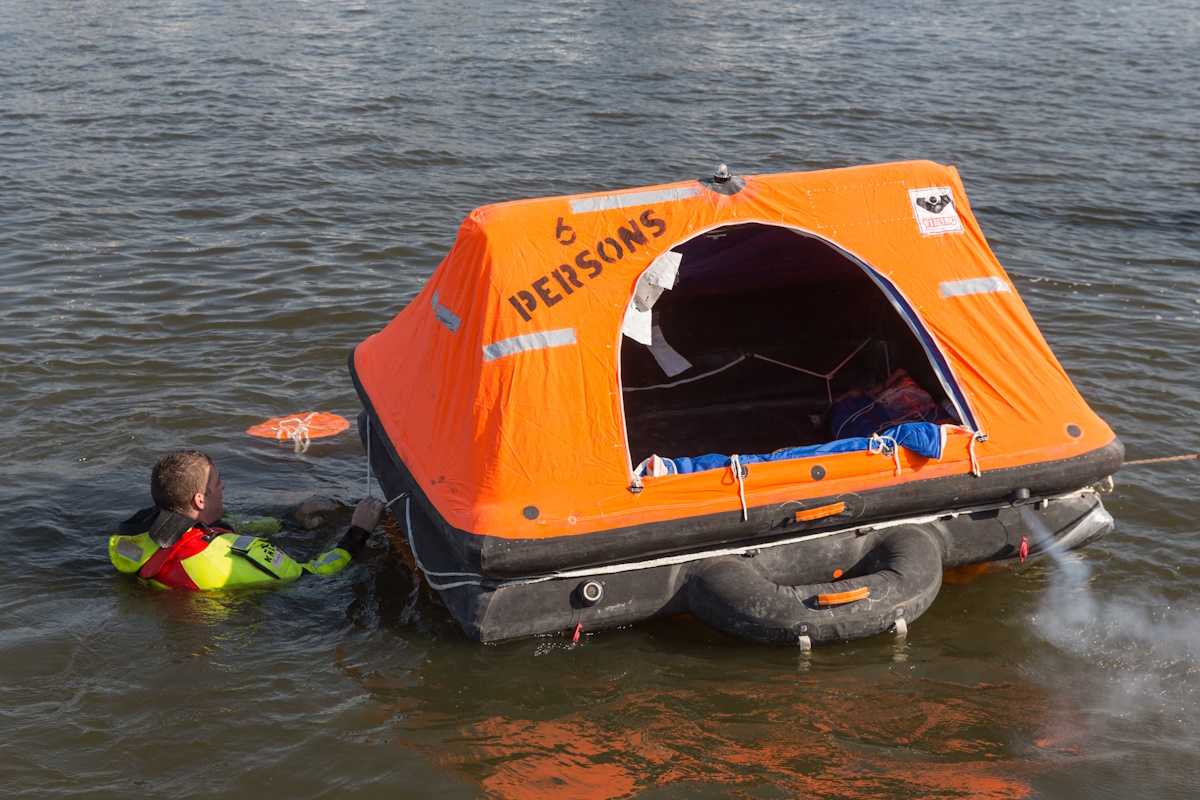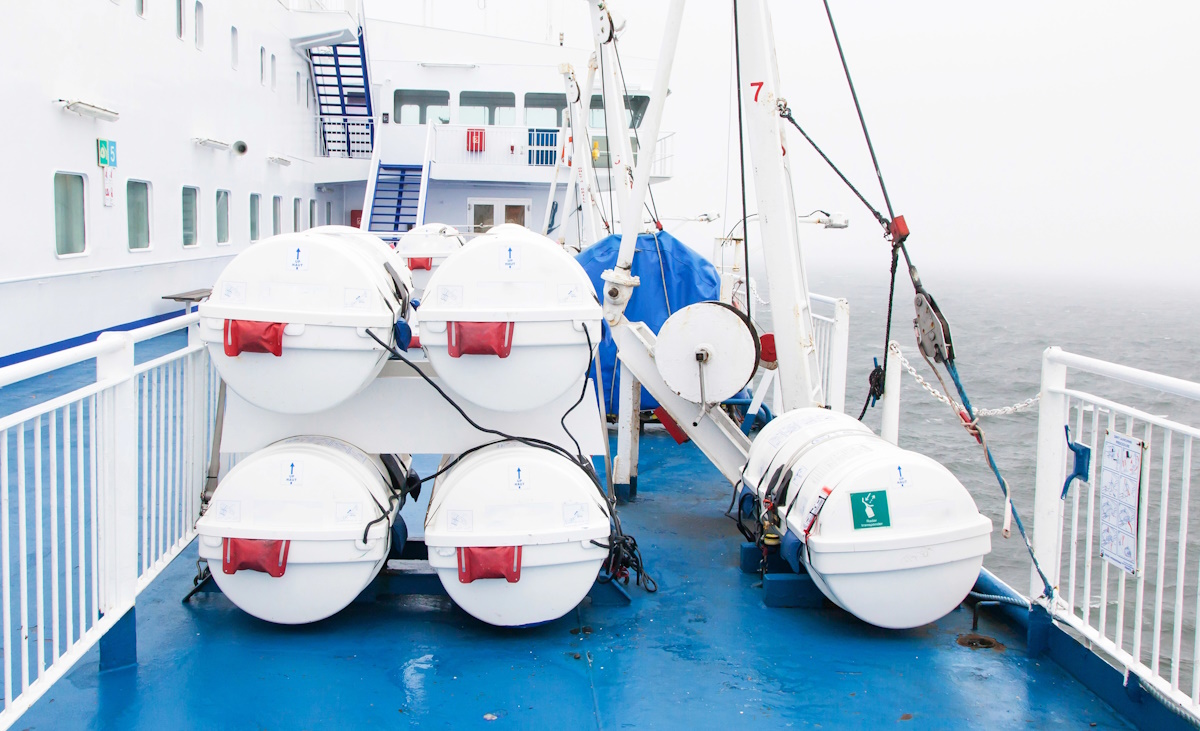
Understanding Marine Safety Equipment Regulations for Liferafts in the UK requires clear insight into the legal standards that safeguard lives during maritime emergencies. This overview explains how MCA guidance, SOLAS Chapter III and ISO 9650 standards work together, outlines vessel-specific liferaft mandates, details mandatory servicing intervals, offers practical selection criteria and shows how Universal Safety Ltd supports ongoing compliance. By mastering these regulations, operators and owners can ensure reliable emergency evacuation solutions and meet UKCA requirements.
What Are the Key Marine Safety Regulations Governing Liferafts in the UK?
Liferafts in UK waters must comply with regulations that define design, performance and servicing to guarantee passenger safety. These rules derive from the Maritime and Coastguard Agency (MCA), the SOLAS Convention and ISO 9650 standards, each reinforcing rigorous quality and inspection protocols for different vessel categories.
What Role Does the Maritime and Coastguard Agency (MCA) Play in Liferaft Regulations?
The MCA enforces marine safety by approving service stations, issuing Marine Guidance Notes (MGNs) and auditing liferaft compliance.
Key MGNs relevant to inflatable liferafts include:
- MGN 499: Servicing standards for small commercial vessel liferafts
- MGN 280: Carriage requirements for pleasure craft over 13.7 m
- MGN 320: Conditions for periodic maintenance and amendments
MGN 553 (M+F) Amendment 1: Life-Saving Appliances - Inflatable Non-SOLAS Liferafts, Lifejackets, Marine Evacuation Systems, Danbuoys and Lifebuoys - Technical Standards and Servicing Requirements
This Marine Guidance Note from the UK's Maritime and Coastguard Agency (MCA) provides updated guidance on acceptable standards and servicing requirements for non-SOLAS inflatable life-saving appliances, including ISO 9650 liferafts, for UK commercial vessels. It clarifies the acceptance of ISO 9650-1:2022 Type 1 liferafts with SOLAS A packs for certain vessels and outlines servicing processes.
This directly supports the article's sections on the MCA's role, specific MGNs (like MGN 499 being replaced), liferaft requirements for small commercial vessels, and mandatory servicing intervals by MCA-approved stations.
These notes ensure uniform servicing intervals and certified station accreditation, establishing a clear path to regulatory compliance. Understanding these requirements sets the stage for international treaty obligations under SOLAS Chapter III.
How Does the SOLAS Convention Define Liferaft Standards and Requirements?
SOLAS (Safety of Life at Sea) Chapter III mandates that merchant ships carry liferafts capable of rapid deployment, with A- or B-pack emergency equipment and annual servicing. SOLAS liferafts must:
- Pass inflation and structural tests
- Include specified survival gear for at least 24 hours
- Undergo annual maintenance by accredited stations
International Convention for the Safety of Life at Sea (SOLAS), Chapter III: Life-Saving Appliances and Arrangements
SOLAS Chapter III establishes international standards for life-saving appliances on merchant ships, including requirements for liferafts, their design, performance, and mandatory annual servicing by approved stations to ensure rapid deployment and passenger safety during maritime emergencies.
This research directly supports the article's section on how the SOLAS Convention defines liferaft standards and requirements, including annual servicing and equipment packs.
These provisions guarantee reliable evacuation appliances for commercial vessels and align with UK law under the Merchant Shipping Regulations.
What Are the ISO 9650 Standards for Small Craft Liferafts?
ISO 9650 specifies performance criteria for leisure and small commercial craft liferafts in two parts:
| Liferaft Type | Pack Duration | Applicability |
|---|
| ISO 9650-1 Group A | >24 hours | Offshore racing and coded workboats |
| ISO 9650-2 | <24 hours | Coastal cruising and pleasure sailing |
This table clarifies how ISO 9650-1 covers extended survival missions while ISO 9650-2 suits shorter coastal passages.
Small craft — Inflatable liferafts — Part 1: Type 1 and type 2
The ISO 9650-1:2022 standard specifies design, performance, and marking requirements for inflatable liferafts for small craft up to 24 meters, categorizing them into Type 1 (for extended voyages, high winds) and Type 2 (for coastal cruising) with different temperature ranges and equipment packs.
This directly supports the article's section on ISO 9650 standards for small craft liferafts, detailing the types, applicability, and equipment pack differences.
Recognising these distinctions informs vessel-specific equipment choices under UK regulations.

What Are the Liferaft Requirements for Different Vessel Types in the UK?
Each vessel category carries its own liferaft mandates, balancing risk profile, operating area and passenger numbers to ensure adequate evacuation capacity.
What Liferaft Regulations Apply to Commercial Vessels?
Commercial vessels must carry SOLAS-approved liferafts with A-pack emergency equipment and follow strict inspection cycles.
| Vessel Category | Liferaft Standard | Emergency Pack |
|---|
| Passenger Ship | SOLAS A pack | 36 hours supplies |
| Cargo Vessel ≥500 GT | SOLAS A pack | 24 hours basic pack |
| Offshore Support | ISO 9650-1 Group A | Extended survival pack |
This comparative breakdown shows how cargo and passenger shipping rely on SOLAS design while support vessels may opt for ISO 9650-1, bridging international and UK-specific enforcement.
What Are the Liferaft Rules for Pleasure Vessels Over 13.7 Metres?
Pleasure yachts exceeding 13.7 m must carry liferafts conforming to ISO 9650-2 or SOLAS standards depending on area of operation. Operators should:
- Fit a valise or canister-stored liferaft rated for at least six passengers
- Upgrade to ISO 9650-1 Group A for offshore racing or blue-water cruising
- Supplement with grab-bags carrying personal flotation and signaling devices
Meeting these criteria elevates safety beyond minimum legal thresholds and prepares crews for extended offshore scenarios.
How Do MCA Codes Affect Small Commercial Vessel Liferaft Compliance?
Small commercial vessels coded under MCA regulations follow MGN 499, requiring ISO 9650-1 Group A liferafts for coded workboats and annual servicing by an approved station. This coding ensures that operators adhere to consistent performance tests and inspection intervals that mirror SOLAS demands at a scale suitable for smaller fleets.
How Often Must Liferafts Be Serviced and Inspected to Meet UK Regulations?
Regular servicing preserves liferaft integrity, functionality and compliance, preventing equipment failure in emergencies.
What Are the Mandatory Servicing Intervals for SOLAS and ISO Liferafts?
| Liferaft Standard | Initial Interval | Recurring Interval |
|---|
| SOLAS A & B packs | 12 months | 12 months |
| ISO 9650-1 Group A | 3 years (first cycle) | Annually after 9 years |
| ISO 9650-2 | 12 months | 12 months |
| Valise liferafts | 12 months | 12 months |
This schedule aligns inspection and certification events with legal mandates, ensuring liferafts remain service-ready throughout their operational life.
What Happens During a Liferaft Servicing and Inspection?
- Unpacking and visual integrity assessment
- Full inflation and pressure testing
- Cylinder hydrostatic testing and servicing
- Canopy, seams and block-stitch inspections
- Emergency pack content verification and replenishment
- Re-packing with new hydrostatic release unit (HRU)
This sequence guarantees each liferaft meets design specifications and functions reliably under SOLAS and ISO performance criteria.
Why Is Servicing Only Valid at MCA Approved Service Stations?
MCA approval ensures liferaft service stations possess accredited technicians, calibrated test equipment and documented quality systems. Authorisation by the Maritime and Coastguard Agency validates every inspection against Marine Equipment Regulations, providing operators with certified compliance and fully traceable safety records.
How Do You Choose the Right Liferaft for Your Vessel and Compliance Needs?
Selecting an appropriate liferaft hinges on capacity calculations, storage type, regulatory coverage and budget considerations to optimise safety and legality.
What Factors Determine Liferaft Capacity and Storage Type?
- Number of persons on board plus safety margin
- Container style: valise for weight-sensitive craft, canister for robust protection
- Stowage location with ready-to-launch clearance
- Crew training for deployment under adverse conditions
Matching capacity and packaging to vessel characteristics prevents storage conflicts and ensures swift evacuation readiness.
What Are the Differences Between SOLAS and ISO Liferaft Equipment Packs?
| Pack Type | Equipment Level | Survival Duration |
|---|
| SOLAS A pack | Comprehensive gear | ≥24 hours |
| SOLAS B pack | Basic essentials | ≥24 hours |
| ISO 9650-1 pack | Extended survival | >24 hours |
| ISO 9650-2 pack | Coastal essentials | <24 hours |
Understanding these contrasts helps owners decide between advanced offshore capability and coastal-only configurations.
Should You Hire or Purchase a Liferaft for UK Waters?
- Cost Efficiency: Hire avoids capital outlay and includes servicing
- Compliance Assurance: Rental providers guarantee up-to-date equipment
- Operational Flexibility: Short-term hire for special voyages reduces long-term maintenance burden
- Ownership Control: Purchase allows custom equipment packs and branding options
Evaluating these factors helps vessel managers align budget, usage frequency and regulatory demands.
How Can Universal Safety Ltd Help Ensure Liferaft Compliance and Safety?
Universal Safety Ltd combines accredited expertise, fast turnaround and global reach to support vessel operators in meeting all liferaft regulations.
What Liferaft Servicing and Inspection Services Does Universal Safety Ltd Provide?
- Annual SOLAS and ISO 9650 liferaft servicing
- Cylinder hydrostatic testing and HRU replacement
- Emergency pack replenishment and certification
- Free loan liferafts if turnaround exceeds guaranteed timeframe
These services ensure continuous compliance and operational readiness under MCA and international standards.
How Does Liferaft Hire Support Regulatory Compliance and Operational Readiness?
- Fully serviced SOLAS- and ISO-compliant liferafts
- Flexible hire periods tailored to voyage duration
- Guaranteed up-to-date safety certificates
- Rapid deployment of replacement rafts in emergencies
This approach minimises downtime and simplifies audit preparation for commercial and leisure operators alike.
Where Can You Find Accredited Liferaft Servicing and Sales in the UK?
Universal Safety Ltd operates MCA approved stations across key UK ports, including Southampton, London and Aberdeen, and provides nationwide collection and delivery. These strategically located facilities combine local access with global service capabilities, ensuring liferafts meet UKCA marking requirements and international regulations.
Liferaft regulations in the UK integrate multiple layers of legal and technical standards designed to maximise survival prospects at sea. By understanding MCA mandates, SOLAS obligations and ISO 9650 criteria, vessel operators can choose, maintain and deploy the right liferaft solutions. Universal Safety Ltd’s accredited services and hire options deliver seamless compliance and enhanced maritime safety for every voyage.
![]() hire@ universalsafety.co.uk
hire@ universalsafety.co.uk![]() service@ universalsafety.co.uk
service@ universalsafety.co.uk![]() accounts@ universalsafety.co.uk
accounts@ universalsafety.co.uk![]() aviation@ universalsafety.co.uk
aviation@ universalsafety.co.uk